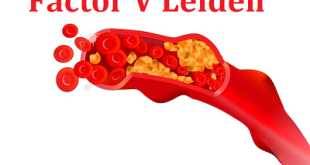Definition
Fatty liver disease is the accumulation of triglycerides and other fats in the liver cells. The amount of fatty acid in the liver depends on the balance between the processes of delivery and removal. In some patients, fatty liver may be accompanied by hepatic inflammation and liver cell death (steatohepatitis). Potential pathophysiologic mechanisms for fatty liver include the following:
- Decreased mitochondrial fatty acid beta-oxidation
- Increased endogenous fatty acid synthesis or enhanced delivery of fatty acids to the liver
- Deficient incorporation or export of triglycerides as very low-density lipoprotein (VLDL)
There are two main types of fatty liver disease:
- Alcoholic liver disease (ALD)
- Nonalcoholic fatty liver disease (NAFLD)
Alcoholic Liver Disease (ALD)
Alcoholic fatty liver disease is due to heavy alcohol use. Liver breaks down most of the alcohol you drink, so it can be removed from your body. But the process of breaking it down can generate harmful substances. These substances can damage liver cells, promote inflammation, and weaken your body’s natural defenses. The more alcohol that you drink, the more you damage your liver. Alcoholic fatty liver disease is the earliest stage of alcohol-related liver disease. The next stages are alcoholic hepatitis and cirrhosis.
The causes of getting ALD are:
- Hepatitis C (which can lead to inflammation in your liver)
- Too much iron in your body
- Being obese
Nonalcoholic fatty liver disease (NAFLD)
NAFLD is a type of fatty liver disease that is not related to heavy alcohol use. There are two kinds:
- Simple fatty liver, in which you have fat in your liver but little or no inflammation or liver cell damage. Simple fatty liver typically does not get bad enough to cause liver damage or complications.
- Nonalcoholic steatohepatitis (NASH), in which you have inflammation and liver cell damage, as well as fat in your liver. Inflammation and liver cell damage can cause fibrosis, or scarring, of the liver. NASH may lead to cirrhosis or liver cancer.
The cause of nonalcoholic fatty liver disease is complex and not completely understood. The most important factors appear to be the presence of obesity and diabetes.
Causes
There are several identifiable causes of fatty liver that are not nonalcoholic fatty liver disease but may cause confusion. The most common are excessive alcohol consumption and hepatitis C. Other causes include
- Wilson’s disease,
- Lipodystrophy (a disease of fat storage),
- Starvation,
- Intravenous nutrition, and
- Abetalipoproteinemia (a disease of fat transport).
Several drugs also cause fatty liver, including
- Corticosteroids,
- Tamoxifen (Nolvadex), and
- Methotrexate (Rheumatrex, Trexall)
Risk factors
Factors that may increase your risk for fatty liver are:
- Excessive alcohol use
- Taking more than the recommended doses of certain over-the-counter medications, such as acetaminophen
- Pregnancy
- High cholesterol
- High triglyceride levels
- Malnutrition
- Metabolic syndrome
- Polycystic ovary syndrome
- Sleep apnea
- Type 2 diabetes
- Underactive thyroid (hypothyroidism)
- Underactive pituitary gland (hypopituitarism)
Symptoms and signs
You might have fatty liver disease and not realize it. There are often no symptoms at first. As time goes on, often years or even decades, you can get problems like:
- Feeling tired
- Loss of weight or appetite
- Weakness
- Nausea
- Confusion, poor judgment, or trouble concentrating
You might have some other symptoms, too. Your liver may get larger. You could have a pain in the center or right upper part of your belly. And the skin on your neck or under your arms may have dark, colored patches.
If you have alcoholic liver disease, you may notice that the symptoms get worse after a period of heavy drinking. You could also get cirrhosis, a scarring of your liver. When that happens, you might have:
- Buildup of fluid in your body
- Wasting of your muscles
- Bleeding inside your body
- Jaundice (yellowing of skin and eyes)
- Liver failure
Diagnosis and Testing
- Liver biopsy, a procedure where the physician inserts a needle into the liver and extracts a sample tissue, which is then examined under a microscope.
- An ultrasound of the liver can suggest the presence of a fatty liver.
- CT- Scan and MRI scan can show the fibrosis of liver.
- Blood Tests: Your doctor may find that liver enzymes are higher than normal on a routine blood test. This doesn’t confirm a diagnosis of fatty liver. Further analysis is necessary to find the cause of the inflammation.
- Physical Exam: If your liver is inflamed, your doctor can detect it by examining your abdomen.
Treatment and medications
Healthy diet and lifestyle
- Lose weight
- Eat a healthy diet
- Exercise regularly
- Stop smoking
Medications
- Insulin sensitizers: Metformin (Glucophage), Pioglitazone (Actos) and rosiglitazone (Avandia)
- Antioxidants: Vitamin E
- Pentoxifylline
- Omega-3-fatty acids
- Lipid-lowering drugs: Statins and Ezetimibe (Zetia)
- Ursodeoxycholic acid
Bariatric surgery
Bariatric surgery is surgery of the gastrointestinal tract that results in loss of weight, and there are several different types of bariatric surgery. Since obesity is believed to be an important factor in the causation of nonalcoholic fatty liver disease and loss of weight has been shown to have beneficial effects on nonalcoholic fatty
Liver transplantation
Once a liver has become cirrhotic and complications have developed, the options for treatment are either treating the complications as they arise or to replace the diseased liver with a transplanted liver.
Can fatty liver disease be prevented?
By choosing a healthy life style, you may prevent obesity – the number one reason for fatty liver disease. Please remember that a healthy diet and exercise are important components of any weight-loss regimen. The following are some suggestions for preventing fatty liver disease5:
- Choose to lead a healthy lifestyle.
- If you are overweight, strive for a gradual and sustained weight loss.
- Eat a well-balanced diet that is low in saturated fats and high in fibre.
- Minimize sugar consumption, reduce the intake of fried food
- Introduce exercise into your routine, at least four times a week. You can enjoy walking, swimming, gardening, stretching.
- Avoid alcohol.
How to cure Fatty liver cirrhosis
Luckily fatty liver is reversible. Here are 5 ways to achieve this:
- Eat less carbohydrate
- Drink less alcohol
- Eat more vegetables, protein and the right fats
- Drink raw vegetable juices
- Take a good liver tonic
- Increase glutathione production
 Diseases Treatments Dictionary This is complete solution to read all diseases treatments Which covers Prevention, Causes, Symptoms, Medical Terms, Drugs, Prescription, Natural Remedies with cures and Treatments. Most of the common diseases were listed in names, split with categories.
Diseases Treatments Dictionary This is complete solution to read all diseases treatments Which covers Prevention, Causes, Symptoms, Medical Terms, Drugs, Prescription, Natural Remedies with cures and Treatments. Most of the common diseases were listed in names, split with categories.








sir , am aged 41 and here taken my complete lipid profile that said all my profile is good but here one thing is that my triglycerides are over the rate compared to normal.
in this regard i would like to know the status. can be clarify my question.
Please consult with Gastroenterologist
sir please I have been having difficulty in breading, weakness and low syclation
Please consult with a doctor to prevent these symptoms from developing into severe form of fatty liver disease.
medicadations. VIEKIRA XR. and RIBAVIRININ.
What could high levels of Alkline Phospate mean?
Alkaline phosphatases are a group of zinc metalloenzymes that catalyze the hydrolysis of phosphate esters with widespread tissue distribution. As the name implies, this enzyme works best at an alkaline pH, and thus the enzyme is virtually inactive in the blood. Alkaline phosphatases act by splitting off phosphorous, creating an alkaline environment.
Elevated levels of ALP are associated with cancer, bone, liver, and kidney diseases.
Biliary Obstruction and Liver Cancer,
Colon Cancer and Breast Cancer,
Leukemia and Sickle Cell Anemia,
Paget’s Disease and Vitamin D Deficiency,
Epilepsy, and Liver Problems Associated with Celiac Disease.
Sir I am 26 years old, i have oain in my left side abdominal so I diogenes my stomach so my doctor verified my reports they said me mild liver fatty so they give one month course of treatment but now also I am getting pain plz suggest me how cure.
Continue your medicines for few more months. if pain continues for a longer period, consult a doctor to get rid of the pain.
extent descriptions but mention name of good liver tonics
Arlak Regliv liver syrup, Livreal and Heptoz liver tonic.
my cholesterol levels of 350
Do physical exercise daily and have consulted with a dietitian about your diet plan.
Spinal Stenosis and Fatty Liver that I referred, is well explained for a layman!
what if u have both hep c and cirrhosis what do i do
Using direct-acting antivirals might help slow or prevent the progression to cirrhosis. If left untreated, cirrhosis can lead to liver failure.
I have a fatty liver due to multiple cycst in my liver. Non Alcoholic. liver.
I have a fatty liver due to multiple cycst in my liver. non alcoholic.
liver chorris. what are the causes and its cure if lab scan shows the results to the patient
There are many causes of cirrhosis including chemicals (such as alcohol, fat, and certain medications), viruses, toxic metals (such as iron and copper that accumulate in the liver as a result of genetic diseases), and autoimmune liver disease in which the body’s immune system attacks the liver.
How can i gain weight
Tips to gain weight:
Don’t drink water before meals. This can fill your stomach and make it harder to get in enough calories.
Eat more often
Drink milk
Try weight gainer shakes
Use bigger plates
Add cream to your coffee
Take creatine
Get quality sleep
My husband is a good example of a low carbohydrate (high fat, moderate protein) diet reducing stored liver fat, so he no longer has NAFLD. This also allowed him to reduce his blood pressure, and even better still to control his blood glucose levels to the extent that this enabled him to come off all medication (including statins, metformin and the other ‘usual suspects’ for an overweight Type II diabetic). He feels great, looks great and he has benefitted from losing a significant amount of weight and making a great difference to all of the various blood triglyceride measurements. A relatively simple dietary switch has been life changing, and possibly life saving.
I am 57 years old. l had a liver test and my GAMMA gt result is above 400. I do take alcohol. Will I drop to normal if I just stop alcohol or take further tests.
Thanks.
If your Gamma-GT levels are elevated, particularly due to alcohol consumption, stopping alcohol is a crucial step that may lead to improvements in liver function over time. However, individual responses vary, and it’s important to consult with a healthcare professional for a comprehensive evaluation of your liver function. They can provide guidance on the best course of action and may recommend follow-up tests to monitor your progress after lifestyle changes. Regular medical monitoring is essential for a holistic approach to managing your liver health.